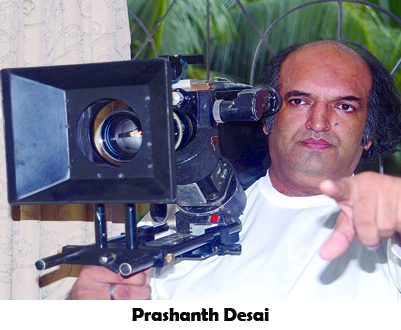For qualified cinematographers there’s a multiplicity of career opportunities with feature and ad film production companies, innumerable television channels, and in freelancing
For those with a passion for photography and a love of movies, cinematography is an exciting and financially rewarding career. ‘Cinematography’ is the process of recording visual images for the cinema and subsequent development of recorded images in sophisticated photo laboratories. The cinematographer’s art requires attention to scene compositions; conceptualising and supervising special effects and lighting; and choosing locations, cameras and film stock. In short, the cinematographer heads a crew which provides the photographic images and visual effects conceptualised by the director of ad, feature, television, and corporate films.
Back in time, most cinematographers worked their way up by starting as junior cameramen and learned on the job. Today with highly sophisticated cameras, lighting and special effects, the demand is for qualified professionals with sound theoretical and practical education. Hence to break into the film and television industry as cinematographers, the youth must undergo formal training.
The minimum requirement for admission into a cinematography study programme is Plus Two. This makes youth eligible for admission into the three and two-year diploma courses of the following institutes:
Film and Television Institute of India (FTII), Pune
|
Satyajit Ray Film and Television Institute, Kolkata
|
L.V. Prasad Film and TV Academy, Chennai
|
Shri Jaya Chamarajendra Polytechnic, Bangalore
|
Zee Institute of Media Arts, Mumbai
|
Whistling Woods International, Mumbai
|
Chennai Film Industrial School, Chennai
|
Moreover there are other second string institutes such as the Digital Academy, Mumbai, and Magic in Motion, Bangalore, which offer short-term courses in videography and cinematography.
After certification, a cinematographer has aplenty job opportunities with feature and ad film production companies; innumerable television channels including Doordarshan, or the option to work as a freelancer. However, freshers inevitably begin their careers as assistant cameramen to learn the ropes and with experience rise to the position of cinematographer aka director of photography.
 LAPPED UP. Apart from the minority who work in ad films and documentaries, most aspiring cinematographers focus on feature films produced by mainstream cinema where young cameramen, who tend to be prepared to handle any kind of work, are welcomed. Trained professionals are promptly lapped up by producers whose output has increased considerably over the years. Freelancers too can earn anywhere between Rs.5,000–10,000 per day.
LAPPED UP. Apart from the minority who work in ad films and documentaries, most aspiring cinematographers focus on feature films produced by mainstream cinema where young cameramen, who tend to be prepared to handle any kind of work, are welcomed. Trained professionals are promptly lapped up by producers whose output has increased considerably over the years. Freelancers too can earn anywhere between Rs.5,000–10,000 per day.
“Cinematography is just taking off in India as the number of feature, ad, corporate, and documentary films is multiplying rapidly with TV channels being launched every other day. There’s a huge shortage of trained cinematographers with only a few reputable institutes like FTII and Satyajit Ray Institute churning out about 100 cinematographers per year, whereas the demand is for around 1,000. More world class training institutes are the need of the hour,” says Prashant Desai, who as an independent cinematographer has earned his spurs shooting ad shorts, documentaries, and educational films for Unicef.
Born into a family of theatre and cinema artistes, Desai had an innate interest in the visual arts. With a head full of creative ideas, he joined the National Institute of Design, Ahmedabad, where he studied visual communication for three years and followed it up with a one-year full-time course in cinema, television, and radio at the Xavier Institute of Communications, Mumbai. Not content with these qualifications, in 1979, he enrolled at the Film and Television Institute of India, Pune — widely acknowledged as India’s premier institute of cinematic disciplines — for a three-year diploma course in cinema with specialisation in cinematography.
Fully equipped with professional qualifications and training, Desai was signed on as an assistant cameraman for celebrated director Mira Nair’s hit film, Salaam Bombay. His impressive body of work includes a documentary on Warli art directed by Vijay Sharma from Switzerland, and wildlife films including Project Tiger for Unicef among numerous others.
According to Desai, who juggles assignments with a teaching job at the Xavier Institute of Communications, the challenge of cinematography is to “strike the balance between art and technology”. It’s a career that requires great commitment, hard work, and continuous development of ideas. Eventually it is rewarding, financially and emotionally,” he concludes.